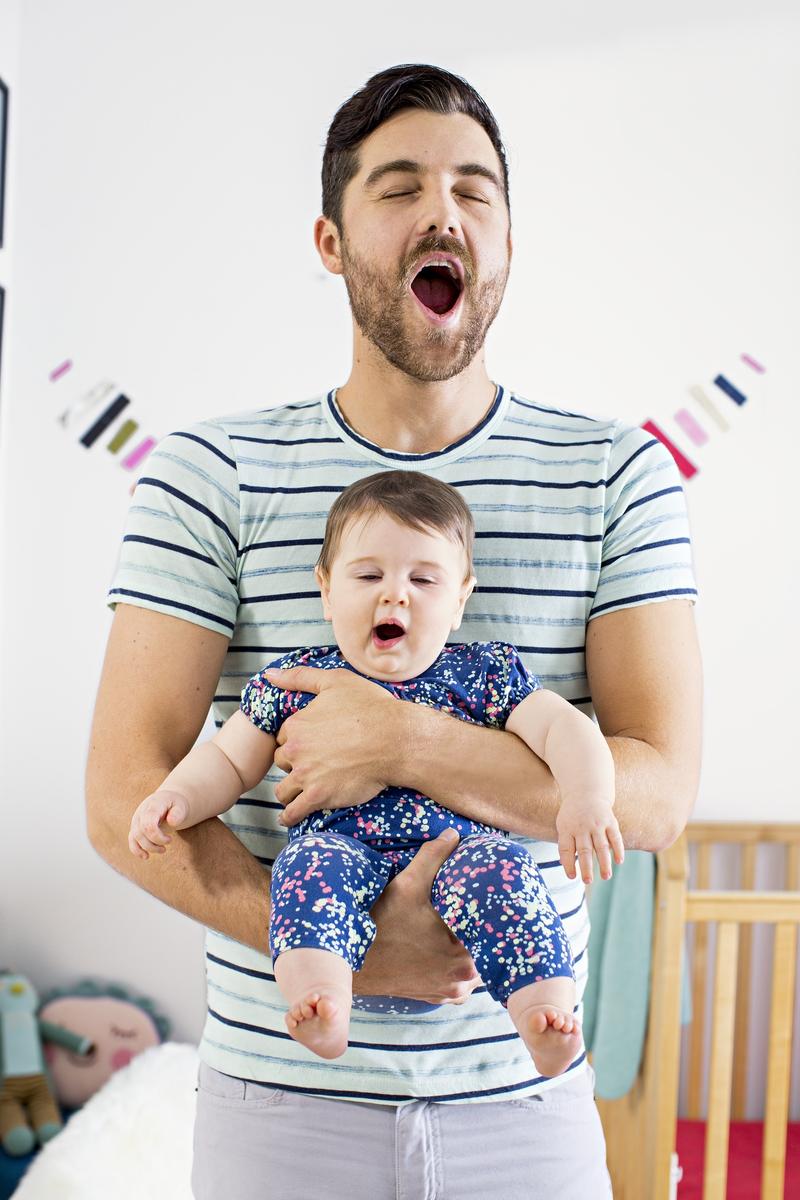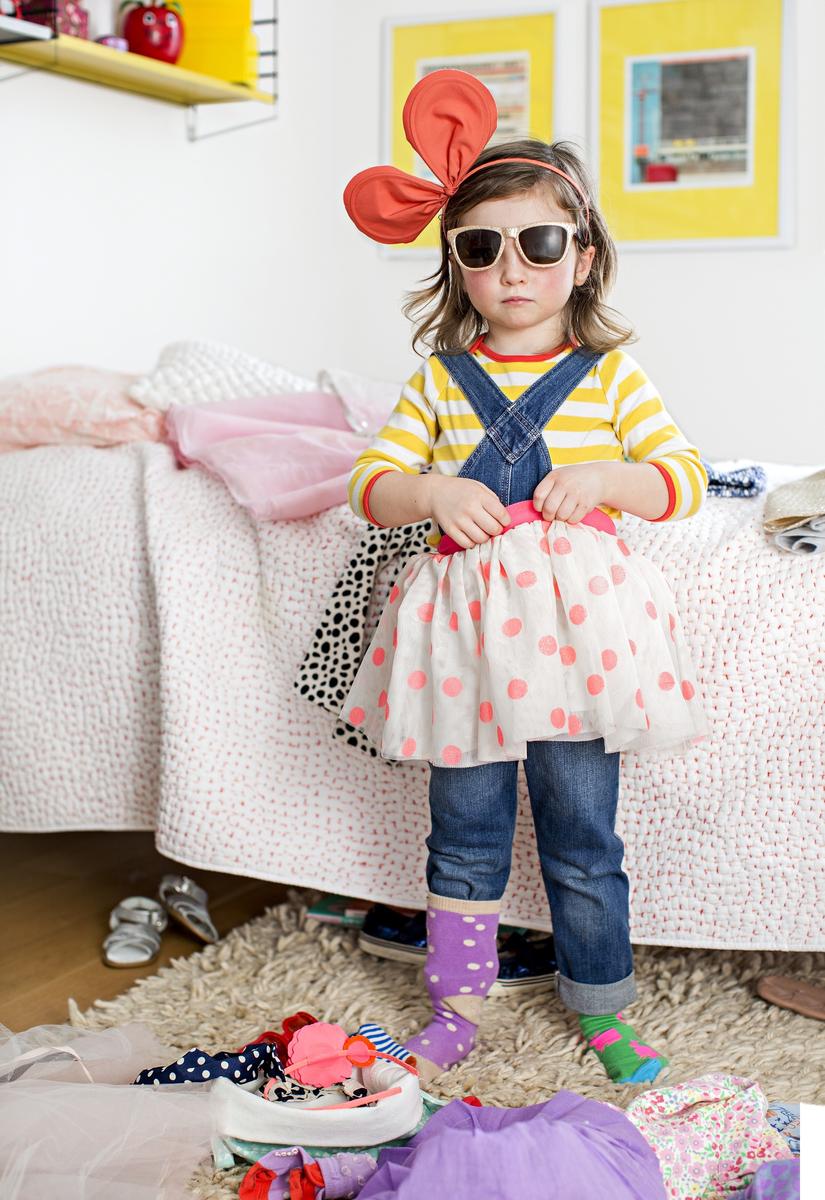
We all look forward to our child’s major milestones—the day she takes her first wobbly step, says “Mama” clearly, or heads off to preschool. But there are lots of other checkpoints along the way to becoming a big kid that are more significant than we may realize and easy to overlook. We asked experts to pinpoint some of the most common (and fun) ones, when they’re most likely to start happening, and what they signal for your little one’s development. (Keep in mind that children hit these milestones at various times—check with your pediatrician if you have any concerns.)
Babies
Cracking Up: Around 3 months
For the first few months of life, your baby is basically a glorified eating, pooping, and sleeping machine. But between 3 and 6 months, he’s developing his sense of humor and will laugh in response to something he finds funny. “An infant’s brain starts to process information more quickly at this stage of development,” says Jacqueline Kirby Wilkins, Ph.D., northeast regional director of Ohio State University Extension, in Wooster. In general, it takes superactive stimuli—Dad making a silly face or Mom saying, “I’m going to get you!” and kissing a bare belly—to get your child giggling. Once he passes the half-year mark, though, his sense of humor becomes more sophisticated. “By 9 or 10 months, unexpected things will crack a baby up—an older sibling walking like a duck, for instance,” adds Dr. Kirby Wilkins. You can encourage this adorable phase by messing with his expectations: Act like the family pet, put his teddy bear on your head, or sing “Ring Around the Rosy” and actually fall down. By laughing with him, you’ll build his budding social skills.
Responding to Sounds: 4 to 5 months
Your baby recognized your voice while she was still in utero, but around 4 months old she’ll actively squirm and try to move toward you when you speak, says David L. Hill, M.D., assistant professor of pediatrics at University of North Carolina School of Medicine, in Chapel Hill. “At this age, pathways in the brain’s hearing centers allow your baby to determine where sound is coming from, and she’ll start turning toward a familiar voice.” In general, infants prefer high-pitched voices with varying sounds (usually Mom’s), at first. To help communicate, get close and use old-fashioned baby talk. “The singsong, exaggerated voice helps infants learn to understand words and expressions,” Dr. Hill explains. Even when she doesn’t seem to be listening, her brain is absorbing what you say.
Playing Copycat: 6 to 8 months
A smile is usually the first “face” an infant makes, at around 6 weeks, but by 8 months he can imitate you blowing raspberries or make a little “O” with his mouth. “Around this time, babies can even begin to match their parents’ look of fear, surprise, or sadness,” says Dr. Hill. So if you look cheerful, chances are your child will smile and laugh. In fact, studies show that babies of depressed or withdrawn parents don’t interact as much, he adds.
Babbling Up a Storm: 6 to 10 months
Your baby’s vocalizations are a key stage in learning to talk. “Babbling represents the building blocks of language,” says Rahil D. Briggs, Psy.D., an infant-toddler specialist at The Children’s Hospital at Montefiore, in New York City. “It shows that an infant is developing more control over making sounds and communicating.” As the first year progresses, babbling becomes more sophisticated (from ah ah ah to ba ba ba) and begins to resemble real speech, with little pauses and inflections. Support your baby by having lots of chatty conversations, even if you’re not speaking the exact same language. Try asking her a question, waiting for a response, and making another comment. This gives her a grasp of conversation, which creates a blueprint for future language development.
Toddlers
Unpacking Adjectives: 18 to 24 months
When kids start speaking, sometime around their first birthday, it’s one word at a time: “Mama.” “Dog.” “Truck.” But as their vocabulary increases, they get more descriptive and say “big red truck” or “furry white dog.” “They’re not only seeing the object, but they also start to get an awareness of what makes similar objects different from one another,” says Michelle Maidenberg, Ph.D., a psychotherapist in Harrison, New York. Using descriptive words when you’re talking to your child will gradually build his vocabulary.
Ditching the Diaper: 18 to 24 months
Okay, ripping off her diaper may not be a magic moment you want to record in the baby book, but it’s a common scenario, since most kids love to go commando. “First of all, it’s fun. A toddler can achieve this pretty easily by herself and enjoys the end result, which is being free and naked,” says Dr. Kirby Wilkins. In cognitive terms, a child who keeps stripping is learning cause and effect. (She loses the diaper; you sprint after her—what’s not to love?) On the plus side of this sometimes annoying milestone: It might mean that your little sweetie is so offended by wet or soiled diapers that she’s ready for potty training.
Caring for Others: 2 to 3 years
It’s one of the sweetest images of childhood: Your kid comforting a sobbing playmate, patting her on the back and telling her it’s okay. Kids this age begin to show altruistic feelings, says Michele Saysana, M.D., medical director of quality and safety at Riley Hospital for Children at Indiana University Health, in Indianapolis. Dr. Saysana says you can nurture such sensitivity by modeling it: Show empathy for your child when he’s distressed (“I know it hurts. It’s not fun to fall down”) and talk about other children’s emotions (“That little boy looks sad—shall we try to cheer him up?”). Another way to help: Read aloud Berenstain Bears and Franklin the Turtle books, which model compassion and appreciation.
Taking It One Step at a Time: 2½ to 3 years
Suddenly, you notice that your child is walking up stairs more or less the way you do: right foot, left foot, right foot. That’s significant, explains Dr. Kirby Wilkins, because it shows that his gross motor skills are taking a giant leap forward. “His balance is improving dramatically and the coordination between the upper and lower body is becoming more efficient,” she says. For you, that means an easier time navigating long stairways when you’re out and about with your toddler. Work on his newfound sense of balance even when you’re not doing steps. Challenge him to try bouncing up and down on one foot, or walking with alternating feet on a painted line at the playground or on a low curb in your neighborhood.

Preschoolers
Recalling Past Events: 3 to 4 years
Your child’s memories are mostly associated with strong emotions, both good and bad (Christmas at Grandma’s house, getting nipped by a dog). “The ability to talk about the past means she’s learning to sequence events and store memories, which are both important for active learning later,” says Michelle Hintz, Psy.D., a psychologist at the Cadenza Center for Psychotherapy and the Arts, in Hollywood, Florida. Granted, your kid will usually be fuzzy on the details, including when things actually happened. “Initially, all past events are lumped into the ‘yesterday’ category,” Dr. Hintz explains. Help boost her memories by adding comments and filling in extra details (“That’s right, sweetie, we did go to Grandma’s for Christmas. Remember how you helped make a snowman?”). Looking at mementos (photos, drawings, crafts) together and talking about them also helps solidify her memories.
Telling Little Lies: 3 to 5 years
Of course, you don’t want to encourage lying, but the ability to tell a fib shows that your child has reached a new level of reasoning power, points out Dr. Hintz: “He recognizes he can potentially alter the outcome of events through his words.” Most early lies are told to avoid getting into trouble, along the lines of “I didn’t eat the cookie” or “He hit me first!” Don’t overreact, and avoid giving a lecture. “Preschoolers respond more to actions than to reasoning,” says Dr. Hill. “So explain that lies are not acceptable, and include an appropriate consequence, like a time-out or losing a privilege or a toy.”
Clapping Out a Rhythm: Around 4 years
Your child will begin to clap automatically to her favorite Justin Roberts song and she is right with the rhythm. That’s a major accomplishment, says Dr. Saysana. “Clapping on the beat means that she’s able to concentrate, stay on task, and learn a pattern,” she says. It also shows that she has good coordination. Expose your preschooler to all types of music, which will help her recognize patterns, an important building block for math and language. (If you can stand the noise, give her percussion instruments such as maracas, tambourines, and bongos.)
Getting Decked Out: 3 to 5 years
Your child loves to feel independent by getting dressed without your help. “To put on clothes, kids need well-developed motor skills and a good sense of balance,” explains Dr. Saysana. At 3, most children can start pulling on stretchy pants and tops by themselves, but not much more. “Snaps, buttons, and zippers require fine motor skills that your child probably won’t develop until at least age 4,” explains Dr. Saysana. So buy some simple pull-on outfits and remember to have patience when she insists, “I want to do it!”
Parents Magazine













